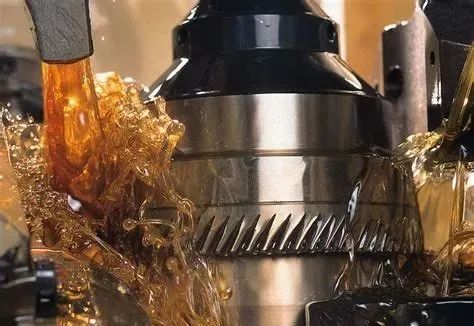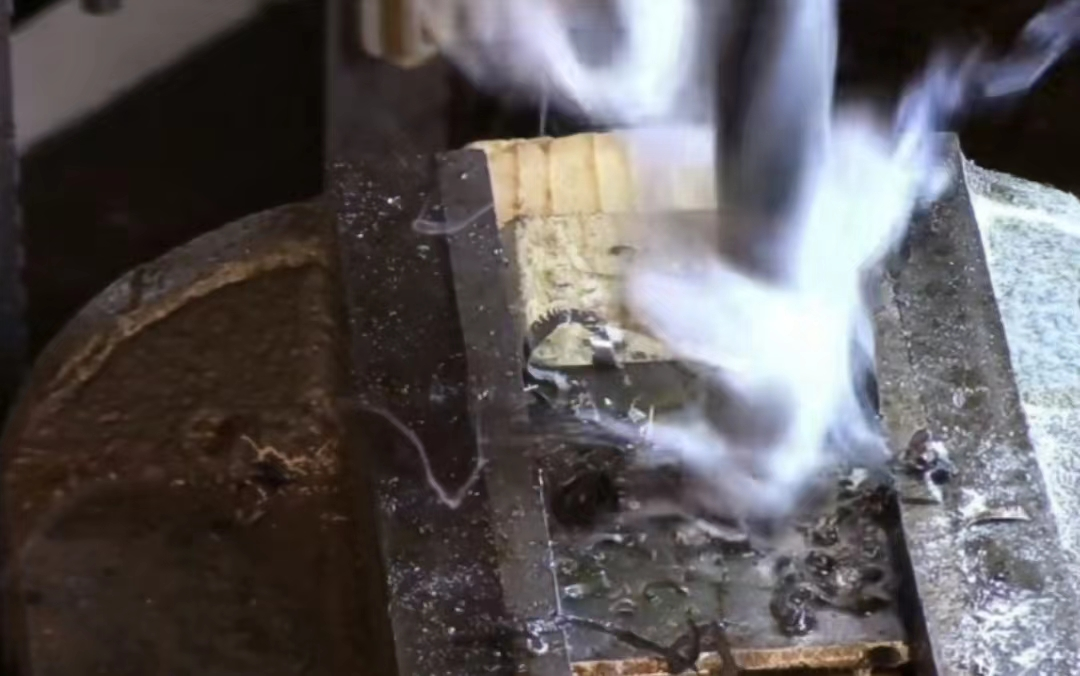The cutting oil has a lot of smoke, and the solution is coming
January 31, 2023
The metal processing lubricant will produce oil mist in the working process, and the droplet particles ≤ 5um will cause harm to the human body, leading to some occupational diseases. In the process of turning, milling, drilling, grinding and other metal processing, due to the use of metalworking fluid, a large number of oil mist particles will be formed in the air. Metalworking fluid is a very complex mixture. In addition to hydrocarbon composition, it may also contain sulfonates, fatty amines, nitrates, dyes, fungicides and other chemical substances.

Existence form of oil mist The metal cutting process can produce the following three types of oil mist: 1. Clean oil mist generated by jet impact, free of solid dust; 2. Smoke generated by evaporation or burning due to high temperature of heating or high-speed cutting; 3. Oil mist containing grinding dust generated by metal cutting fluid injection during grinding. The range of particle diameter varies greatly with the way of oil mist generation. Medical research has proved that oil vapor and large particle droplets are relatively harmless to human lungs. The oil mist in the form of oil vapor is inhaled into the lungs and exhaled. They will not be captured by the alveoli, and large particles of oil droplets cannot enter the lungs through the nose and bronchi. Only the oil mist particles that exist in the form of liquid drops and have a diameter of less than 5um can reach the pulmonary alveoli smoothly and precipitate in the lungs, thus causing great harm to the human body. Hazards of oil mist 1. Fire hazard and environmental pollution The existence of oil mist of metalworking fluid greatly increases the potential fire hazard. At the same time, the possibility of slipping on the floor with oil mist increases. The air with oil mist is discharged from the workshop, which will also pollute the environment. The biggest harm of metalworking fluid oil mist is to affect the health of workers exposed to it. Long term exposure of workers to metalworking fluid oil mist will lead to diseases, allergic skin diseases, malignant tumors and other diseases, and may cause genetic effects. 2. Affect human health Another major hazard of metalworking fluid oil mist is its carcinogenic potential. The carcinogenicity of metalworking fluid mainly depends on its additive concentration, pollution and use conditions. At present, there is no research on the carcinogenicity of metalworking fluid for human beings. Although there is still controversy about the carcinogenic tendency of metalworking fluid and its oil mist, experimental studies on animals have found that the oil mist of processing fluid can cause skin tumor/skin cancer stabbing, lung cancer and pancreatic cancer. 
Control method There are two main methods to control the concentration of oil mist particles in the atmosphere of the workshop: mechanical and chemical. 1. Mechanical methods include installing exhaust fan, oil mist catcher, setting protective cover or splash guard around the machine tool, etc. These methods are easy to implement and effective, so they are widely used. However, each of these methods has its own shortcomings. Although the exhaust fan is simple and effective, the simple exhaust device is not desirable. It just moves a large amount of oil mist from indoor to outdoor, which is an extremely irresponsible behavior to the environment. The discharged gas shall be filtered for oil mist. The oil mist filter is an important equipment to complete this task. The oil mist capture rate of equipment with good quality can reach more than 98%. At present, most of the processing workshops adopt the mechanical oil mist purification method. The exhaust hood is used to locally supplement the oil mist in the processing center, and the fan is used to pump the oil mist to the centralized or stand-alone oil mist purifier. The oil mist will be discharged after being filtered by special filter materials in the purifier. Benefits of this: (1) Reduce the impact on employees: Oil mist particles of 0.3~3.5UM will remain in human body and pose a hazard to health. (2) Reduce industrial accidents: Oil mist deposition makes the working area, floor and walkway slippery, which is easy to cause wrestling accidents. (3) Reduce fire hazards: Oil deposits on the wall, ceiling and equipment form potential fire hazards. (4) Reduce coolant consumption: The recovered oil mist can be reused to reduce the economic cost of coolant for the factory. 2. Special low oil mist machining lubricant is used for chemical method. From the perspective of cutting fluid, using Class III oil or ester oil and low viscosity oil as the Base Oil of cutting fluid can reduce the generation of oil mist to a certain extent. Oil based cutting fluid with high viscosity is not easy to disperse and form oil mist. Cutting fluids containing macromolecular compounds such as polyepoxyethane, polyisobutylene, and polymethacrylate are often used as anti fogging agents because of their high cohesion and resistance to breakage. The larger the molecular particles are. The harm caused by oil mist of processing fluid in machining workshop has attracted the full attention of the world. Although the installation of oil mist purification system has increased the project investment, it can significantly reduce the harm of oil mist, improve the level of labor safety and health, and reduce the emission of air pollutants, which has become a development trend. China should also speed up the corresponding work, formulate the control standards for oil mist, guide the engineering design and implementation, and protect the health of workers.







